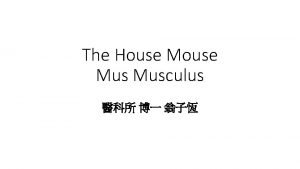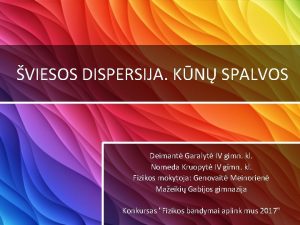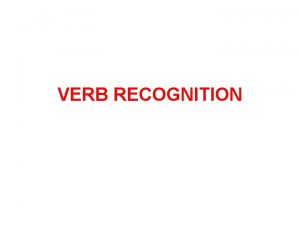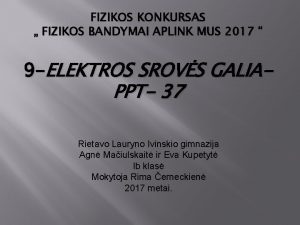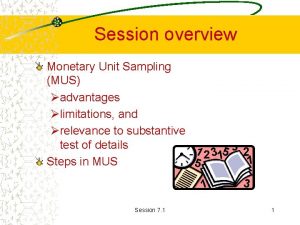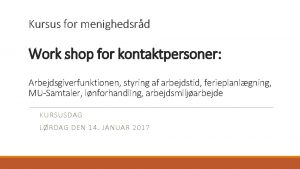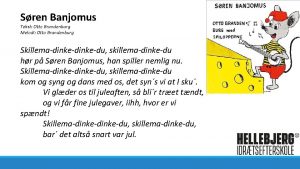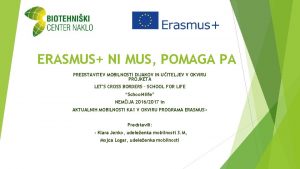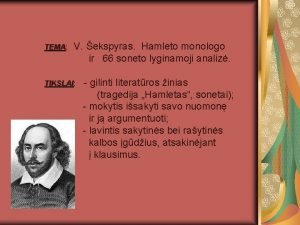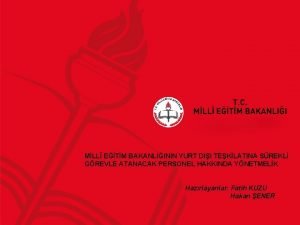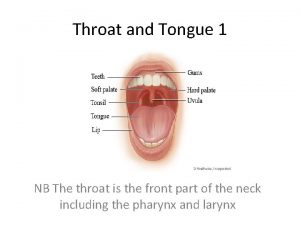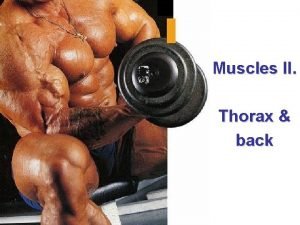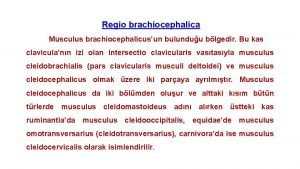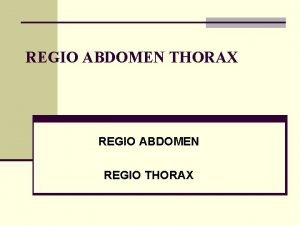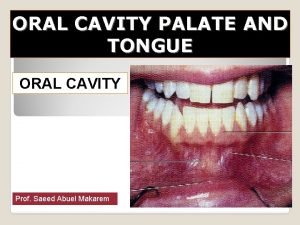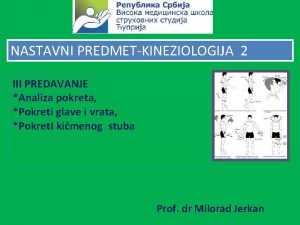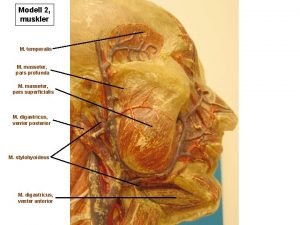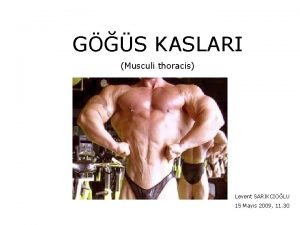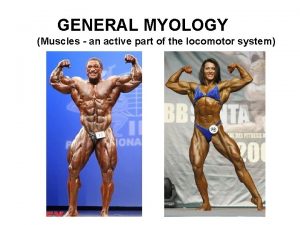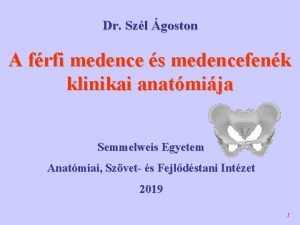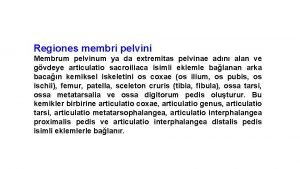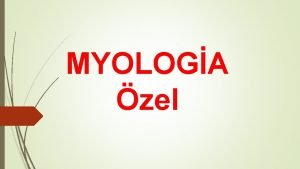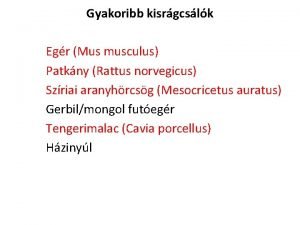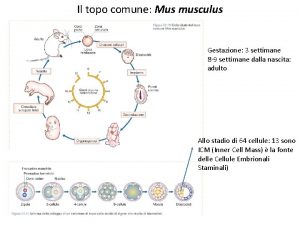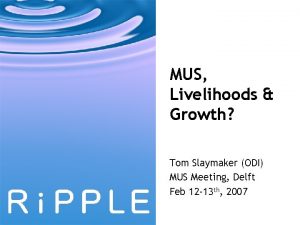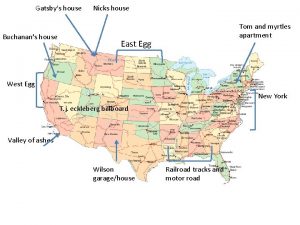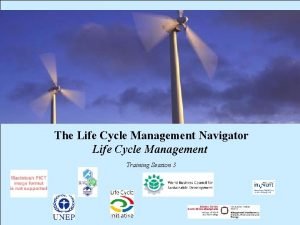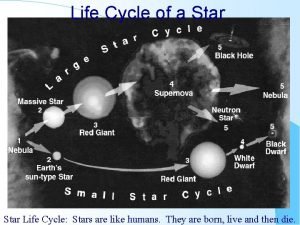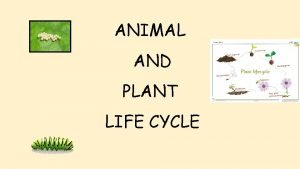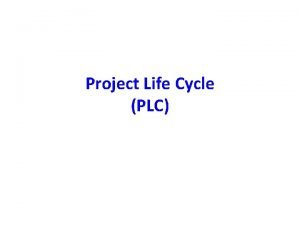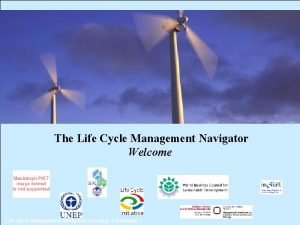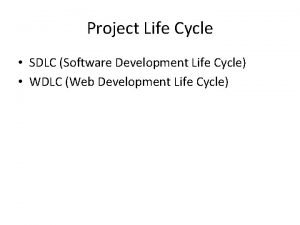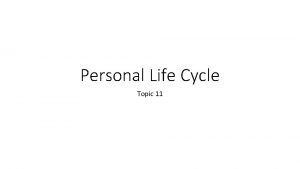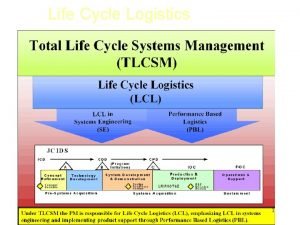The House Mus Musculus The life cycle of



























- Slides: 27

The House Mus Musculus 醫科所 博一 翁子恆

• The life cycle of the mouse is slow and cumbersome. • Embryonic development (gestation) - 3 weeks Newborn to puberty - 5– 6 weeks Effective life cycle - roughly 8– 9 weeks • A mammal, exalted position on the evolutionary tree • Chimpanzees are not amenable to the various experimental manipulations available in mice.


• Link between the basic principles (like worms and flies) and human disease. • The patched gene of Drosophila encodes a critical component of the Hedgehog receptor. Certain patched mutants cause various cancers, such as skin cancer, in both mice and humans. No amount of analysis in the fly would reveal such a function. • “Knockout” technology (removal of specific genes in normal mice) continues to have an enormous impact on our understanding of the basic mechanisms underlying human development, behavior, and disease.

• Mice - 19 autosomomes (22 in humans), as well as X and Y sex chromosomes • The mouse genome has been sequenced and assembled • Extensive synteny between mice and humans (homologous) • Same complement of genes present in the human genome: each contains approximately 25, 000 genes, and there is a oneto-one correspondence for more than 85% of these genes. • The mouse is an excellent model for human development and disease.

Mouse Embryonic Development Depends on Stem Cells • Mouse eggs are small and difficult to manipulate (100 microns in diameter) • Prohibits grafting experiments of the sort done in zebrafish and frogs • Microinjection methods - introducing recombinant DNA into the mouse germ line create transgenic strains • Harvest mouse embryos for in situ hybridization assays and the visualization of specific gene expression patterns. Such visualization methods can be applied to both normal embryos and mutants carrying disruptions in defined genetic loci.

• The initial divisions are very slow - once every 12– 24 hours • Morula - 16 -cell stage, the first obvious diversification of cell • Placenta - in outer regions; inner cell mass (ICM) - in internal regions generate the at the 64 -cell stage. • There are only 13 ICM cells, but these form all of the tissues of the adult mouse. • ICM - the prime source of embryonic stem cells. Can be cultured and induced (appropriate growth factors) to form any adult cell type.


• Blastocyst - 64 -cell stage (about 3– 4 days). Ready for implantation. • ICM forms all three germ layers: endoderm, mesoderm, and ectoderm a fetus emerges that contains a brain, a spinal cord, and internal organs such as the heart and liver.

• First stage - ICM divides into an inner hypoblast and an outer epiblast, which form the endoderm and ectoderm, respectively. • Cells that migrate into primitive streak (groove) form the internal mesoderm. • Node, the anterior end of the primitive streak - signaling molecules (TGF-b signaling, Chordin and Noggin) that pattern the anterior–posterior axis. • Mutant mouse embryos that lack these genes lack head structures such as the forebrain and nose.


It Is Easy to Introduce Foreign DNA into the Mouse Embryo • Microinjection methods - DNA is injected into the egg pronucleus placed into the oviduct. • Integrates at random positions in the genome with high efficiency • The fusion gene inserts into most or all of the cells in the embryo (ICM) - form the somatic tissues and germline of the adult mouse. • Approximately 50% of the transgenic mice exhibit germline transformation; that is, their offspring also contain the foreign recombinant DNA.


• For example, a fusion gene containing the enhancer from the Hoxb 2 gene attached to a lac. Z reporter gene. Embryos and fetuses were harvested and stained observed in the hindbrain.


Homologous Recombination Permits the Selective Ablation of Individual Genes • “Knock out” - disrupt single genetic loci. Creation of mouse models for human disease. • p 53 gene - DNA repair. Cancer cells become highly invasive when p 53 function is lost. • A strain of mice with p 53 gene removal, are highly susceptible to cancer, die young Test potential drugs and anticancer agents • Although Drosophila contains a p 53 gene, it does not provide the same opportunity for drug discovery.

• Gene disruption experiments are done with ICM cells (proliferate without differentiating) by culturing mouse blastocysts. • For example, a target gene is modified by deleting a small region near the beginning of the gene that removes codons for essential amino acids from the encoded protein and causes a frameshift in the remaining coding sequence.

• The modified target gene is linked to a drug-resistance gene, such as NEO, which confers resistance to neomycin. • The NEO gene is placed downstream of the modified target gene, but upstream of a flanking region of homology with the chromosome such that double recombination with the chromosome will result in the replacement of the target gene with the mutant gene and the drug resistance gene. (Alternatively, the NEO gene can be inserted into the target gene. )

• The incidence of nonhomologous recombination is high. • To enrich for homologous recombination events, the recombinant vector also contains a thymidine kinase (TK) marker, that can be subjected to counter selection by use of the drug ganciclovir. • In homologous recombination – TK shed; in nonhomologous recombination - contain TK gene counter selection.


• These recombinant ES cells are harvested and injected into the ICM of normal blastocysts inserted into the oviduct and allowed to develop to term. • Once mice are produced that contain transformed germ cells, matings among siblings are performed to obtain homozygous mutants. • Lethality should be analyzed. In others, the mutant embryos develop into full-grown mice, which are then examined using a variety of techniques.

Mice Exhibit Epigenetic Inheritance • Epigenetic inheritance – peculiar, non-Mendelian. This phenomenon is known as parental imprinting. • The basic idea is that only one of the two alleles for certain genes is active. The other copy is selectively inactivated (either in sperm cell or the egg). • Igf 2 gene - insulin-like growth factor. Only actively expressed from the father (human H 19 is in the other way)

• During spermiogenesis, the DNA is methylated the methylation inactivates the silencer the Igf 2 gene can be activated. • In contrast, the silencer DNA is not methylated in the developing oocyte. Hence, the Igf 2 allele inherited from the female is silent. • In other words, the paternal copy of the gene is “imprinted”—in this case, methylated—for future expression in the embryo.


• There approximately 30 imprinted genes in mice and humans. • Many of the genes (ex. Igf 2) control the growth of the developing fetus. • Igf 2 protein promotes the growth of the fetus the mother attempts to limit it (protect the mother from her own fetus).

• All strategies for achieving basic biological goals (survive, adapt, and propagate) are similar in the vast majority of organisms. It may be examined using simple organisms. • A wide range of powerful experimental techniques can be used with success to manipulate the mouse and to explore various complex biological problems.

• As a result, the mouse has served as an excellent model system for studying developmental, genetic, and biochemical processes that are likely to occur in more highly evolved mammals.
 Mus musculus life cycle
Mus musculus life cycle Spalva sudaryta iš visų spektro spalvų
Spalva sudaryta iš visų spektro spalvų M s t mus tis nt
M s t mus tis nt Mus-samtale forberedelsesskema
Mus-samtale forberedelsesskema Prietaisas elektros aktyviajai galiai matuoti
Prietaisas elektros aktyviajai galiai matuoti Monetary unit sample
Monetary unit sample Mus samtale lovpligtig
Mus samtale lovpligtig Skillema dinke dinke du tekst
Skillema dinke dinke du tekst Inercijos pavyzdziai aplink mus
Inercijos pavyzdziai aplink mus Ni mus
Ni mus Viljamas šekspyras 66 sonetas
Viljamas šekspyras 66 sonetas [email protected]
[email protected] Mus (rod)
Mus (rod) Musculus uvulae
Musculus uvulae Back and neck muscle diagram
Back and neck muscle diagram Regio colli ventralis
Regio colli ventralis Crus diafragma
Crus diafragma M. palatoglossus
M. palatoglossus Lamina prevertebralis fascia cervicalis
Lamina prevertebralis fascia cervicalis Apofizarni zglob
Apofizarni zglob Pars profunda musculus masseter
Pars profunda musculus masseter Brachioradialis
Brachioradialis Pectoralis minor origo
Pectoralis minor origo Division of muscles
Division of muscles Hiatus analis
Hiatus analis Musculus skloňování
Musculus skloňování Vagina tendinis
Vagina tendinis Latissimus dorsi origo insertio
Latissimus dorsi origo insertio
